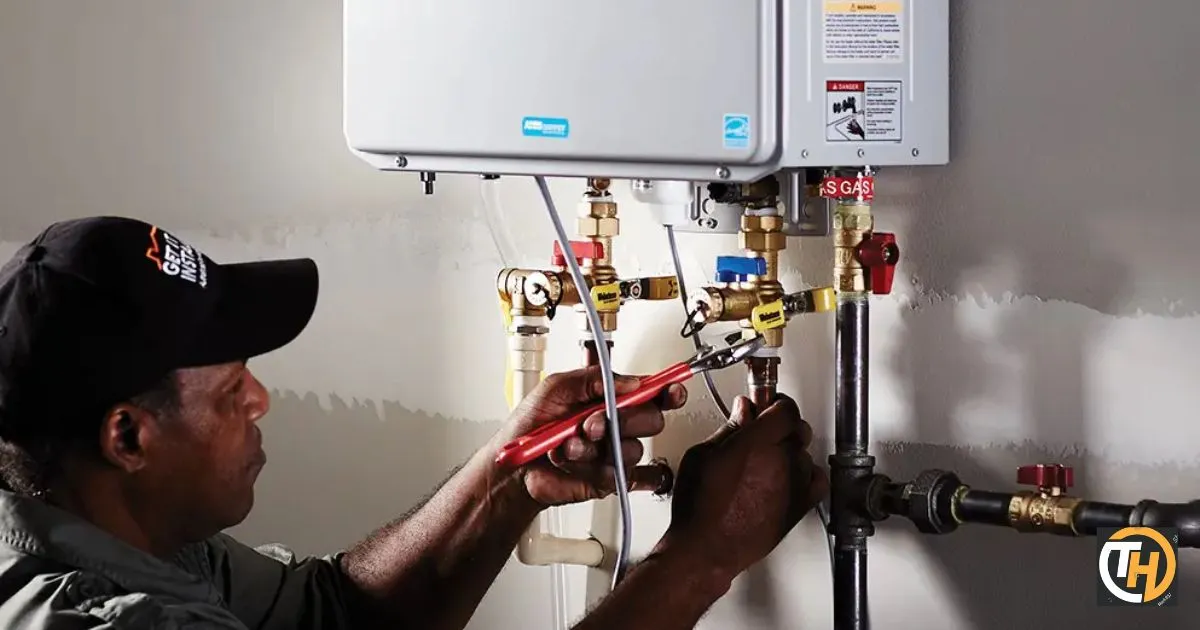When it comes to maintaining your water heater and ensuring its longevity, one critical yet often overlooked task is opening the plastic drain valve. In this guide, we will walk you through the essential steps to effectively open the plastic drain valve on your water heater, maintaining its efficiency and preventing potential issues down the line.
Dealing with a water heater often involves various maintenance tasks to ensure it functions at its best. One essential aspect is knowing how to open the plastic drain valve on your water heater.
In this guide, we’ll walk you through the steps and provide insights into why and when you should open the plastic drain valve. By the end of this article, you’ll have the knowledge and confidence to tackle this task effectively, helping to extend the lifespan of your water heater and ensure a reliable supply of hot water in your home.
Why Opening the Plastic Drain Valve Matters
Water heaters are a vital part of our daily lives, providing us with hot water for various household tasks. Over time, sediment and mineral buildup inside the tank can affect its performance, leading to reduced heating efficiency and increased energy consumption. To mitigate these issues and extend the life of your water heater, periodically opening the plastic drain valve is essential.
Safety Precautions
Before we delve into the steps to open the plastic drain valve, it’s crucial to prioritize safety. Here are some precautions to keep in mind:
Turn Off the Power

It’s crucial to begin by disconnecting the power supply to your water heater. For electric water heaters, this means locating your home’s circuit breaker panel and turning off the breaker that controls the heater. In the case of gas water heaters, locate the gas control valve, typically found near the bottom of the unit. Turn the valve to the “pilot” position.
This ensures that the heater won’t accidentally ignite while you’re working on it, reducing the risk of accidents or injuries.
Protective Gear
Before you start, put on appropriate protective gear. Wear thick, heat-resistant gloves to shield your hands from hot surfaces and water. Additionally, wear eye protection, such as safety goggles, to safeguard your eyes from potential splashes or debris that might be dislodged during the process. Safety gear is a fundamental part of ensuring your well-being throughout the procedure.
Beware of Hot Water
Be aware that the water inside the tank can be scalding hot, posing a risk of burns. Take extra precautions to avoid any contact with the hot water. Accidents can happen quickly, so it’s essential to work methodically and stay mindful of the water’s temperature. Avoid touching any part of the water heater that might be hot to the touch.
Ensure Proper Ventilation
When you’re dealing with a gas water heater, it’s vital to perform this task in a well-ventilated area. This precaution is especially important because gas fumes can be harmful when inhaled in enclosed spaces. Adequate ventilation helps to disperse any gas emissions, minimizing the risk of exposure. If possible, open windows or doors to create good airflow, enhancing safety during the maintenance process.
By following these steps and safety guidelines, you can carry out maintenance on your water heater with reduced risks and enhanced personal protection. Always prioritize safety when working on any household appliance to prevent accidents and ensure a smooth process.
Tools and Materials You’ll Need
To open the plastic drain valve on your water heater, gather the following tools and materials:
- Adjustable wrench
- Garden hose (optional)
- Bucket or drain pan
- Towels or rags
- Eye protection and gloves
These items will help you perform the task safely and effectively.
Step-by-Step Guide to Opening the Plastic Drain Valve
Now, let’s proceed with the step-by-step process of opening the plastic drain valve on your water heater. Follow these instructions carefully:
Step 1: Turn Off the Power
Begin by turning off the power supply to your water heater. For electric heaters, locate the circuit breaker and switch it off. For gas heaters, set the gas control valve to the “pilot” position.
Step 2: Turn Off the Cold Water Supply
Locate the cold water supply valve, typically situated above your water heater. Turn it off to stop the inflow of water into the tank.
Step 3: Locate the Plastic Drain Valve
The plastic drain valve is usually located near the bottom of your water heater. It resembles a hose bib and is used to drain water from the tank. You might need to remove a cover or cap to access it.
Step 4: Attach a Hose (Optional)
If you want to direct the water to a suitable drainage location, such as a floor drain or outside, attach a garden hose to the plastic drain valve. Ensure the hose is securely connected to the valve.
Step 5: Open the Plastic Drain Valve
Using an adjustable wrench, carefully turn the plastic drain valve counterclockwise to open it. Be prepared for hot water to start flowing out if your tank is hot. This is why it’s essential to wear protective gear and exercise caution.
Step 6: Drain the Water
Let the water flow out of the tank through the plastic drain valve. You can direct it into a bucket or a floor drain. Keep an eye on the water’s clarity; it will start clear and become cloudy as sediments are flushed out. Continue draining until the water runs clear.
Troubleshooting Tips
In some cases, you might encounter challenges with the plastic drain valve:
- Stuck Valve: If the valve is difficult to turn, apply a penetrating oil or lubricant to loosen it. Be patient and gentle to avoid damaging the valve.
- Leaking Valve: If the valve is leaking even when closed, it may need replacement. You can temporarily stop the leak by attaching a hose cap.
When to Seek Professional Help
While opening the plastic drain valve is generally a DIY task, there are situations where professional assistance may be necessary:
- If you feel uncomfortable with the process or lack confidence in your skills.
- If the plastic drain valve is damaged or leaking.
- If you observe unusual sounds, odors, or issues with your water heater during or after the process.
In these cases, it’s advisable to contact a professional plumber or technician to inspect and repair your water heater.
Maintenance and Care
To ensure your water heater continues to operate efficiently and lasts as long as possible, it’s recommended to flush the tank and open the plastic drain valve at least once a year. Regular maintenance can significantly extend the lifespan of your water heater and reduce energy consumption.
Table Summarizing the Steps to Open the Plastic Drain Valve:
| Step | Description |
| 1. Turn Off the Power | Switch off the circuit breaker for electric heaters or gas control valve for gas heaters. |
| 2. Turn Off the Cold Water Supply | Locate and turn off the cold water supply valve. |
| 3. Locate the Plastic Drain Valve | Find the plastic drain valve near the bottom of the water heater. |
| 4. Attach a Hose (Optional) | Connect a garden hose if you want to direct the water. |
| 5. Open the Plastic Drain Valve | Use an adjustable wrench to turn the valve counterclockwise to open it. |
| 6. Drain the Water | Allow the water to flow out of the tank, directing it as needed. |
FAQs
How often should I open the plastic drain valve on my water heater?
It’s recommended to do this once a year.
Can I use a regular wrench to open the plastic drain valve?
Yes, a standard adjustable wrench should work fine.
What if the plastic drain valve is stuck or won’t open?
Try using penetrating oil and gentle force or seek professional help.
Is it necessary to turn off the water heater before opening the valve?
Yes, always turn off the power and cold water supply first.
How can I prevent leaks after closing the plastic drain valve?
Use Teflon tape when threading it back in to ensure a secure seal.
Conclusion
In conclusion, the process of opening the plastic drain valve on your water heater is a simple yet essential maintenance task that can significantly impact your water heater’s performance and lifespan. Regular maintenance, including flushing the tank, is key to ensuring your water heater continues to provide reliable hot water for your household needs. By following the safety precautions and step-by-step guide provided in this article, you can perform this task with confidence and keep your water heater in optimal condition.
Regular maintenance ensures that your water heater continues to provide reliable hot water for your daily needs.











